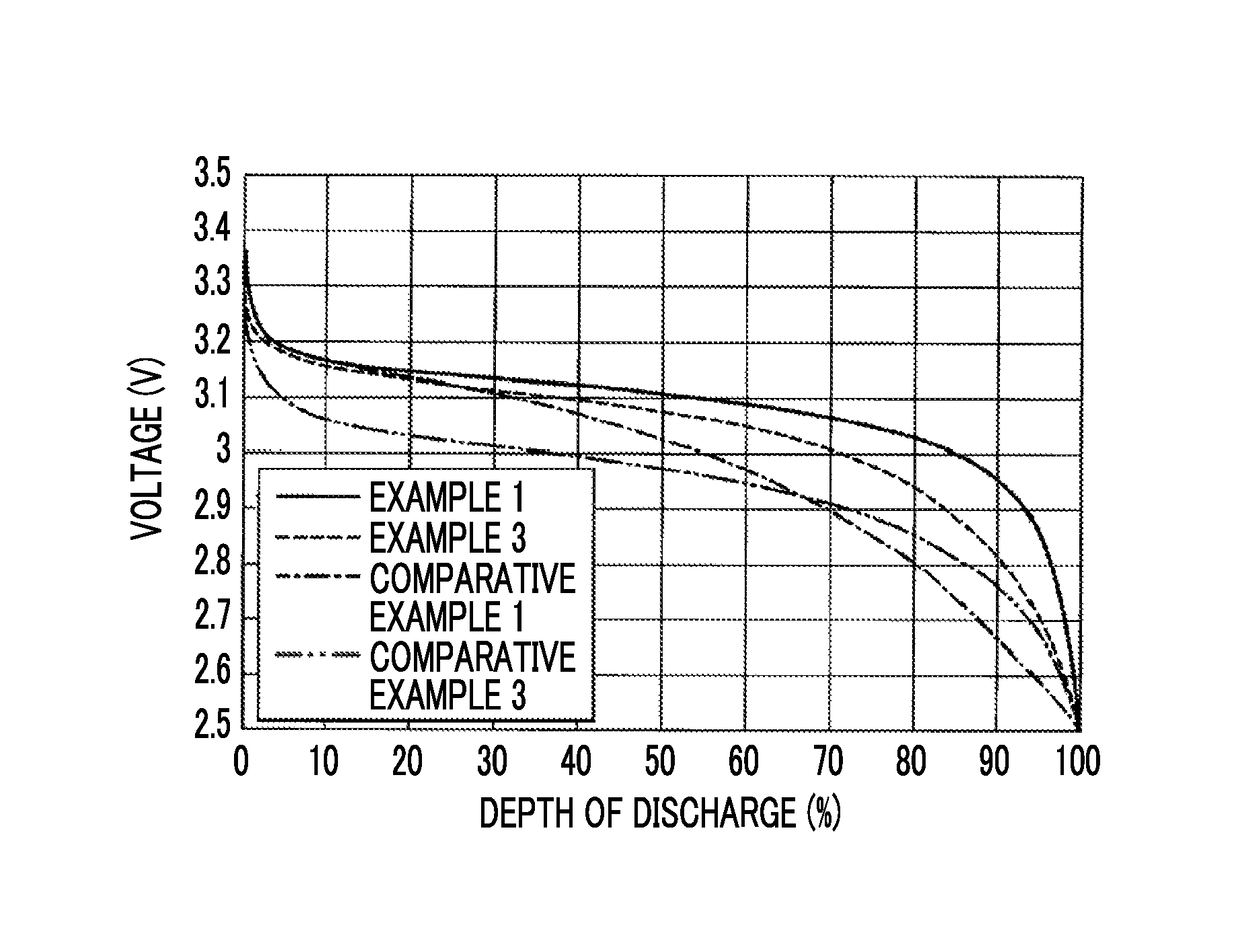Cathode material for lithium-ion secondary battery, cathode for lithium-ion secondary battery, and lithium-ion secondary battery
a lithium-ion secondary battery and cathode material technology, applied in the direction of positive electrodes, active material electrodes, cell components, etc., can solve the problems of difficult to obtain the necessary current value, difficult to efficiently reduce the etc., to achieve excellent input and output characteristics, reduce reaction unevenness in the cathode, and significantly suppress the effect of transition metal elution
- Summary
- Abstract
- Description
- Claims
- Application Information
AI Technical Summary
Benefits of technology
Problems solved by technology
Method used
Image
Examples
example 1
[0160]Synthesis of cathode material for lithium-ion secondary battery Lithiumphosphate (Li3PO4) (1,000 mol) andiron (II) sulfate (FeSO4) (1,000 mol) were added to and mixed with water so that the total amount reached 1,000 L, thereby preparing a homogeneous slurry-form mixture.
[0161]Next, this mixture was stored in a pressure-resistant airtight container having a capacity of 2,000 L and was hydrothermally synthesized at 160° C. for 24 hours, thereby generating a precipitate.
[0162]Next, this precipitate was cleaned with water, thereby obtaining a cake-form precursor of a cathode active material.
[0163]Next, a polyethylene glycol (0.8 kg) as the organic compound and zirconia balls having a diameter of 1 mm as medium particles were used in this precursor of the cathode active material (5 kg in terms of solid contents), and a dispersion treatment was performed in a ball mill for three hours, thereby preparing a homogeneous slurry.
[0164]Next, this slurry was sprayed in the atmosphere at 1...
example 2
[0174]A cathode material A2 of Example 2 was obtained in the same manner as in Example 1 except for the fact that graphite sintered bodies having an average length in the longitudinal direction of 10 mm were added to the granulated body as the thermal conduction auxiliary substance so that the content thereof reached 10% by volume with respect to 100% by volume of the obtained granulated body.
[0175]A lithium-ion secondary battery of Example 2 was produced in the same manner as in Example 1 except for the fact that the cathode material A2 was used.
example 3
[0176]A cathode material A3 of Example 3 was obtained in the same manner as in Example 1 except for the fact that graphite sintered bodies having an average length in the longitudinal direction of 10 mm were added to the granulated body as the thermal conduction auxiliary substance so that the content thereof reached 5% by volume with respect to 100% by volume of the obtained granulated body.
[0177]A lithium-ion secondary battery of Example 3 was produced in the same manner as in Example 1 except for the fact that the cathode material A3 was used.
PUM
| Property | Measurement | Unit |
|---|---|---|
| average primary particle diameter | aaaaa | aaaaa |
| average primary particle diameter | aaaaa | aaaaa |
| charge | aaaaa | aaaaa |
Abstract
Description
Claims
Application Information
 Login to View More
Login to View More - R&D
- Intellectual Property
- Life Sciences
- Materials
- Tech Scout
- Unparalleled Data Quality
- Higher Quality Content
- 60% Fewer Hallucinations
Browse by: Latest US Patents, China's latest patents, Technical Efficacy Thesaurus, Application Domain, Technology Topic, Popular Technical Reports.
© 2025 PatSnap. All rights reserved.Legal|Privacy policy|Modern Slavery Act Transparency Statement|Sitemap|About US| Contact US: help@patsnap.com

